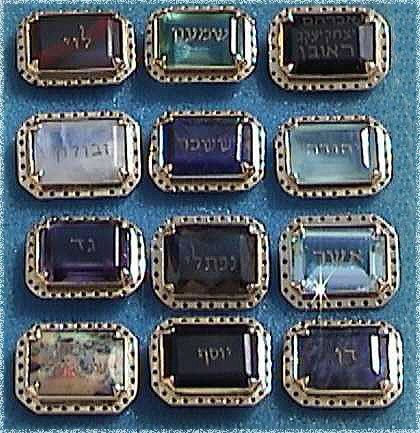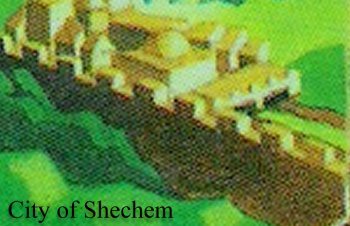 |
The Month of Av 5766 ~by~ Miriam Ben-Yaacov |
|
 |
The Month of Av 5766 ~by~ Miriam Ben-Yaacov |
|
| Shabbat week | Parsha |
Reading | Haphtorah |
| 27 Tammuz - 4 Av
(July 23-29 ) |
Dvarim |
Deut. 1:1 - 3:22 | Isaiah 1:1 – 27 |
| 5-11 Av
(July 30-Aug. 5) |
Vaetchanan
|
Deut. 3:23 - 7:11 | Isaiah 40:1 - 26 |
| 12-18 Av
(Aug. 6-12) |
Ekev |
Deut. 7:12 - 11:25 | Isaiah 49:14 - 51:3 |
| 19-25 Av
(Aug. 13-19) |
Re'ei
|
Deut. 11:26 - 16:17 | Isaiah 54:11 - 55:5 |
He made the letter Tet king over hearing
And He bound a crown to it
And He combined one with another
And with them He formed
Leo in the Universe
Av in the Year
And the left kidney in the Soul
male and female.
--Sefer Yetzirah (Book of Formation)
The above quoted passage is from a kabbalistic text called "Sefer Yetzirah", which is translated: "Book of Formation". Each of the twelve months of the Hebrew year has an associating Zodiac sign, Hebrew tribe, Hebrew letter, spiritual “limb,” “sense,” “experience,” “expression” of the soul.
| Month
of the Jewish calendar ............................................
"Single" Hebrew letter of the Hebrew alphabet ................... Spiritual "limb" of the soul .................................................. "Sense" of the soul ............................................................ Variety of soul-experience ................................................. Expression of the sefirot .................................................... Zodiac sign ....................................................................... Tribe of Israel ................................................................... |
Menachem Av |
 |
On the breastplate of the Cohen Gadol, the High Priest, the stone of the tribe of Shimon was called ”Pit’da”, green topaz, in the center of the top row. The green color hints that Shimon’s face turned greenish with shame when Zimri, the nassi (prince) of the Tribe, rebelled against Moshe in the seduction of the Moadite girls in Shittim. The gem has a cooling property, to aid in a person’s controlling the passionate side of his nature. His flag depicted the city of Shechem, reminiscent of the battle spearheaded by Shimon and Levi against the immoral city over the rape of Dina, on a green background. |
 When Yaakov blessed the tribes, of Shimon he said:
When Yaakov blessed the tribes, of Shimon he said:
 While in the wilderness, the tribe of Shimon camped to the south of the “Mishkan” (Tabernacle), along with the tribes of Reuven and Gad. These three tribes hint of the need to rectify the sensual—seeing, hearing, and fortune. Shimon is also in the south of the Land, in the Negev Desert, divided and scattered, like his brother Levi, through cities in the territory of Yehudah. The territory of Reuven is located on the opposite side of the Dead Sea. All this territory is reminiscent of the wilderness—hot and arid. So, too, are the months corresponding to the tribes of Reuven and Shimon—Tammuz and Av. In these summer months, from 17 Tammuz to 9 Av, are the three weeks of mourning for the destruction of the Temple that was first foreshadowed in Heaven with the sins of the wilderness.
While in the wilderness, the tribe of Shimon camped to the south of the “Mishkan” (Tabernacle), along with the tribes of Reuven and Gad. These three tribes hint of the need to rectify the sensual—seeing, hearing, and fortune. Shimon is also in the south of the Land, in the Negev Desert, divided and scattered, like his brother Levi, through cities in the territory of Yehudah. The territory of Reuven is located on the opposite side of the Dead Sea. All this territory is reminiscent of the wilderness—hot and arid. So, too, are the months corresponding to the tribes of Reuven and Shimon—Tammuz and Av. In these summer months, from 17 Tammuz to 9 Av, are the three weeks of mourning for the destruction of the Temple that was first foreshadowed in Heaven with the sins of the wilderness.
 The form of the Hebrew letter Tet is that of a vessel. The numeric value is nine, the number of months of pregnancy. We can think of a vessel containing the fetus, promising the birth of an individual into the world. There is an aspect of hiddeness, like the fetus within the mother, or substance within a vessel, but also of the soul within the body. Even so, Gd is hidden within His Creation, impregnating the world with His presence. The sefirah of the month, Malchuth, is also a receptacle of the divine energy of all the nine sefirot above pouring into it.
The form of the Hebrew letter Tet is that of a vessel. The numeric value is nine, the number of months of pregnancy. We can think of a vessel containing the fetus, promising the birth of an individual into the world. There is an aspect of hiddeness, like the fetus within the mother, or substance within a vessel, but also of the soul within the body. Even so, Gd is hidden within His Creation, impregnating the world with His presence. The sefirah of the month, Malchuth, is also a receptacle of the divine energy of all the nine sefirot above pouring into it.
Tet is the main letter in the Hebrew words for “inclination,” “below,” and “staff”. As we look at the tet, we can also see the form of a coiled snake. In the Garden of Eden, the snake appealed to the lower worldly inclination of Man. This is still our struggle, bringing with it a tendency to lie, as the snake did to Chava. The snake injured the ability to judge properly. Mankind tends toward imagination. The Hebrew word for serpent, nachash, is also means “to guess,” which was one of the definitive practices of Canaanite cults. The Torah brings us to Truth, which is the opposite of guessing. It is a lot of work to bring our imaginations under control of the Truth of Torah, but this is the work of rectification of our souls. The snake was created with the purpose of being a supportive helper to Mankind, but instead he became the vehicle of the evil inclination. The Hebrew word for snake, “nachash” and the Hebrew word “Mashiach” have the same gematria (numerical value). This means that the damage of the nachash will be rectified by Mashiach in the same way as Moshe transformed the snake back into his staff.
The “sense” corresponding with this month is hearing. In parshat Va’etchanan (Deuteronomy 6:4), read during Av is the most famous call: “Shema, Yisrael…” (“Hear, Israel…”) The Laws are reiterated through the parshaot of the month, reminding Israel to live in accordance with Hashem’s directives and to teach their children to do so, as well. Hearing is connected to the advice of the kidneys, which are the seat of the conscience. We may perceive misleading messages from the left kidney, tending toward rash reaction rather than balancing wisdom of the right side. (The right kidney is associated with the Tribe of Yissachar, the tribe of Torah scholars.) The month of Av is replete with reminders of the consequences of listening to these voices. Hearing and obeying is the way to rectify raw emotions, drawing them in line with Hashem’s will.
The liturgy for the Fast of Tish b’Av is the Book of Lamentations. It begins with the Hebrew word: “Eicha,” translated “How can it be?” or “Alas!” After Adam and Chava ate the forbidden fruit, Gd asked “Where are you?”—in Hebrew also “Eicha.” The term evokes a sense of deep heartbreak of everything gone wrong when we choose the lower inclination and find ourselves separated from our source—Hashem. Adam and Chava’s being cast from the Garden and the Destruction of the Temples were very similar in this respect, eliciting “Eicha” from the depths of our being.
Levi and Shimon both had a history of allowing anger to turn murderous—against the men of Shechem and then against their own brother, Yosef—who was buried at Shechem. Yet Levi (Pinchas) rectified his anger and became zealous for Hashem, while the Shimon (Zimri) remained vulnerable to the urging of the snake. Very interestingly, people who visited Yosef’s tomb spoke of an atmosphere of peace—even in the midst of the extremely hostile Arab population that finally razed the building to the ground. It is only through listening to the voice of the Torah, letting it permeate to the depths of one’s being, the inner voice of his conscience stirring in his kidneys, that he may overcome the sensual temptations and rise up to the fullest potential of his soul. Then he may come to the true peace of Covenant with Hashem, necessary to negate the causeless hatred that destroyed the Temple and bring us to the place of worthiness to restore it to the world.
Chodesh tov (Have a good month)
Miriam Ben-Yaacov
| Previous Months |

Contact:
Miriam Ben-Yaacov
| B'nai Noah | Hebrew Month | Prophecy & Current Events | Biblical Women | Dvar Torah | Week that Was | Poetry & Prose |